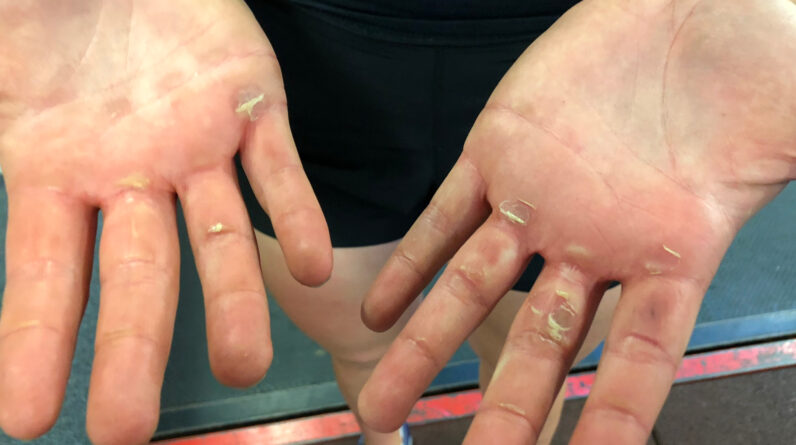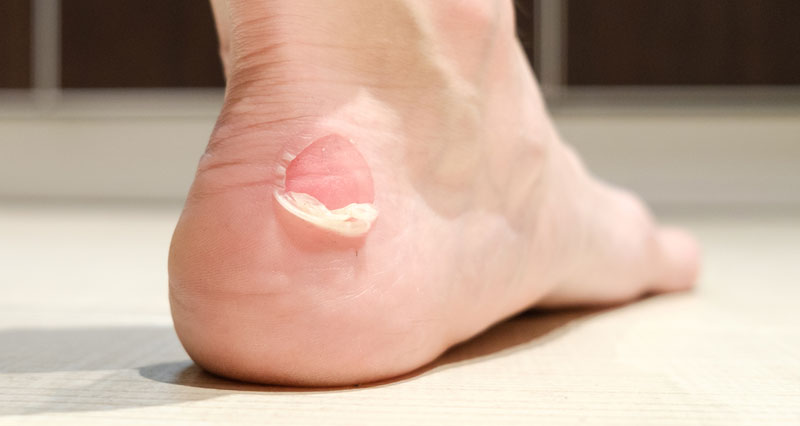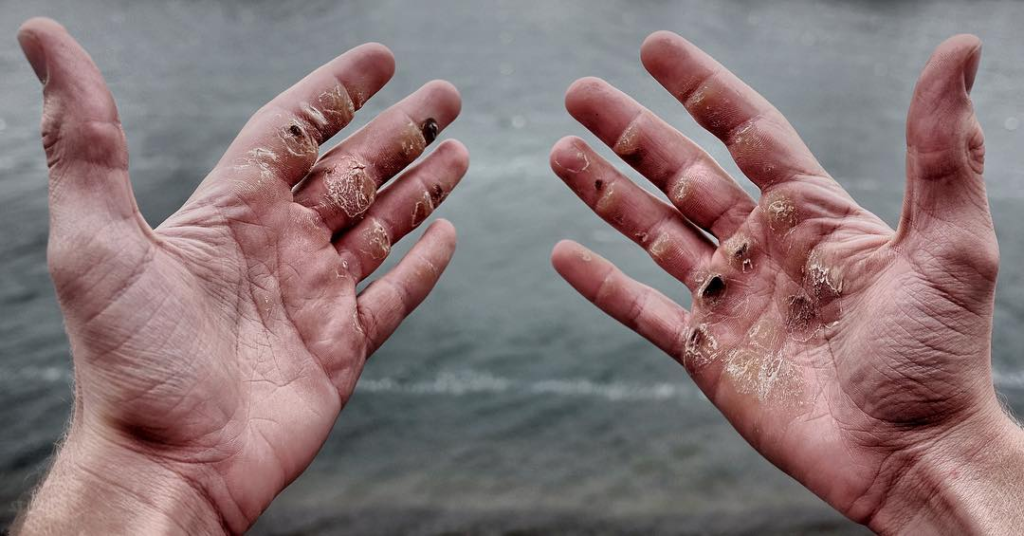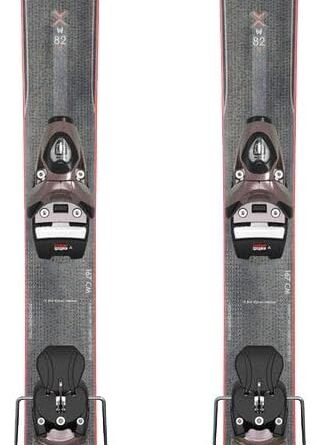
Imagine diving into the crystal-clear waters, feeling the exhilaration as the waves crash against your skin and the sun shines brightly overhead. Engaging in water sports can be an incredible experience, but it often comes with a pesky downside: blisters and calluses. These unwelcome guests can turn a delightful adventure into a painful ordeal. Don’t worry, though! In this article, we’ll uncover some effective ways to prevent and treat blisters and calluses so you can fully enjoy your aquatic escapades without any unnecessary discomfort. So, let’s dive right in and learn how to keep your skin smooth and blister-free, even in the water!

This image is property of www.verywellfit.com.
Preventing Blisters and Calluses
Choose the right gear
When participating in water sports, it’s important to choose the right gear to help prevent blisters and calluses. This includes selecting appropriate equipment such as fins, flippers, gloves, and footwear. It’s essential to ensure that your gear fits properly and is comfortable to wear, as ill-fitting gear can cause friction and irritation leading to blisters and calluses.
Wear proper-fitting footwear
One of the most crucial steps in preventing blisters and calluses is wearing proper-fitting footwear. Whether you’re diving, swimming, or participating in other water activities, investing in high-quality water shoes or aqua socks can significantly reduce the risk of developing blisters and calluses. These types of footwear provide protection and support, minimizing the friction caused by repetitive movements.
Use protective gloves
For water sports that involve gripping equipment such as kayaking or paddleboarding, wearing protective gloves can help prevent blisters and calluses. Look for gloves specifically designed for water sports, as they are often made with materials that provide both grip and protection. By wearing gloves, you can minimize the rubbing and friction that can lead to uncomfortable blisters and calluses.
Apply moisture-wicking socks
Moisture-wicking socks are a great preventative measure to keep your feet dry during water sports activities. These special socks are made of material that wicks away moisture, helping to prevent excess sweat and friction. By keeping your feet dry, you can reduce the likelihood of blisters and calluses forming. Make sure to choose socks that fit well and are comfortable to wear for extended periods.
Use lubricating creams or powders
Lubricating creams or powders can be a helpful addition to your routine in preventing blisters and calluses. Apply a small amount of lubricant to areas prone to friction, such as the feet, hands, or any other areas that come into contact with gear during water sports. This will help reduce friction and create a barrier between your skin and equipment, minimizing the risk of developing blisters and calluses.
Treating Blisters and Calluses
Clean and disinfect the affected area
If you develop blisters or calluses from participating in water sports, it’s important to keep the affected area clean and disinfected. Use a mild soap and warm water to gently clean the area, and be sure to dry it thoroughly afterwards. This will help prevent any potential infections while promoting healing.
Leave blisters intact
Although it may be tempting to pop blisters, it’s generally best to leave them intact. They act as a natural barrier against infection and promote healing. If the blister is in a location where it is likely to burst on its own, you can consider carefully draining it with a sterile needle or by visiting a healthcare professional. Remember to keep the area clean and covered with a bandage after draining the blister.
Apply a blister pad or bandage
Once the blister has been cleaned, applying a blister pad or bandage can provide protection and prevent further irritation. These types of dressings provide cushioning and reduce friction, allowing the blister to heal faster. Make sure to change the bandage regularly and keep the area clean to prevent infection.
Use antibiotic ointment
For blisters or calluses that have burst or become open sores, applying an antibiotic ointment can help prevent infection and promote healing. Consult a healthcare professional if you’re unsure about which ointment to use, and follow their recommendations for proper application.
Trim down calluses
To treat calluses, it’s important to keep them in check to avoid excessive buildup. Gently file down the thickened skin using a pumice stone or a foot file. Avoid removing too much skin at once, as this can lead to discomfort or pain. Regular maintenance of calluses will help keep them under control and prevent them from becoming painful.
Prevention and Treatment for Specific Water Sports
Swimming and Diving
When swimming or diving, wearing a well-fitting swim cap and goggles can help prevent blisters and calluses on the head and eyes. Additionally, using a silicone-based lubricant on areas that come into contact with the water, such as the neck or wrists, can reduce friction and irritation.
Surfing and Bodyboarding
For surfing and bodyboarding, it’s essential to choose the right type of wetsuit that fits snugly without causing excessive friction. Wearing rash guards under the wetsuit can also provide an extra layer of protection. Consider using surf wax on the board to improve grip and reduce the chances of developing blisters on the hands.
Water Skiing and Wakeboarding
Water skiing and wakeboarding can be tough on the hands and feet, as they involve holding onto handles or bindings. To prevent blisters and calluses, opt for blister-resistant gloves or paddler’s gloves that provide both grip and protection. Wearing neoprene socks or booties can also prevent blisters caused by friction with the skis or wakeboard.
Kayaking and Canoeing
Kayaking and canoeing require a firm grip on the paddle, which can lead to blisters and calluses on the hands. Using gloves specifically designed for paddling can help reduce friction and protect the hands. Additionally, choosing a paddle with a comfortable grip can minimize the risk of developing blisters.
Stand-Up Paddleboarding
When stand-up paddleboarding, it’s important to use an adjustable paddle to ensure proper form and prevent strain on the muscles. Using neoprene socks or booties can protect your feet from blisters caused by friction against the board. Applying petroleum jelly to prone areas, such as the back of the ankles or knees, can help reduce friction and prevent blisters.
Protecting Hands and Feet
Wearing neoprene socks or booties
For water sports that involve prolonged periods of being in the water, wearing neoprene socks or booties can provide protection and insulation to your feet. The neoprene material creates a barrier against friction and helps prevent blisters. Make sure to choose socks or booties that fit properly to ensure maximum comfort.
Using adjustable fins or flippers
When using fins or flippers, it’s essential to select ones that are adjustable and fit properly. Ill-fitting fins can cause discomfort and friction, leading to blisters and calluses. By using adjustable fins, you can customize the fit to your feet, reducing the risk of developing blisters.
Applying petroleum jelly to prone areas
Prone areas, such as the back of the ankles or knees, can be more susceptible to developing blisters. Applying a thin layer of petroleum jelly to these areas can reduce friction and create a protective barrier. This will help prevent blisters from forming and keep your skin comfortable during water sports activities.
Using blister-resistant gloves or paddler’s gloves
For activities that involve gripping or paddling, such as kayaking or paddleboarding, using blister-resistant gloves or paddler’s gloves is crucial. These gloves are designed to provide both grip and protection, reducing the chances of developing blisters and calluses on your hands.
Choosing appropriate footwear for specific sports
Different water sports require specific types of footwear. For example, if you’re participating in water skiing or wakeboarding, it’s important to wear water shoes or booties that provide protection and insulation. On the other hand, for swimming or diving, choosing swim fins that fit properly and don’t cause discomfort or friction is essential.

This image is property of www.britishrowing.org.
Maintaining Good Hygiene
Keep your gear clean and dry
Proper maintenance of your water sports gear is essential for preventing infections and skin problems. After each use, rinse your gear thoroughly with clean water and allow it to dry completely before storing. This will prevent the growth of bacteria or fungi that can lead to skin irritation or infections.
Dry your skin thoroughly after water activities
After participating in water sports, it’s important to dry your skin thoroughly. Pay special attention to areas prone to friction, such as in between the toes or behind the ears. Moisture on the skin can create a breeding ground for bacteria, leading to infections or skin issues.
Avoid sharing personal equipment
Sharing personal equipment, such as fins, flippers, or gloves, can increase the risk of infections and skin problems. Bacteria or fungi may be present on someone else’s gear, and using it without proper cleaning can transfer these microorganisms to your skin. Always use your own equipment or ensure that shared gear is thoroughly cleaned and disinfected before use.
Regularly clean and disinfect your gear
In addition to rinsing your gear after each use, it’s essential to regularly clean and disinfect it to prevent the buildup of bacteria or fungi. Use mild soap and warm water to wash your gear, then follow up with a disinfectant spray or wipe. This will help keep your gear clean and hygienic, reducing the risk of skin issues.
Use antifungal sprays or powders
To prevent fungal infections, particularly in warm and humid environments, consider using antifungal sprays or powders on your feet and other prone areas. These products help inhibit the growth of fungi and reduce the risk of conditions such as athlete’s foot. Remember to follow the instructions provided and consult a healthcare professional if needed.
Ensuring Proper Technique and Form
Learn and practice correct techniques
One of the most effective ways to prevent blisters and calluses is to learn and practice the correct techniques for your chosen water sport. This includes proper grip, paddle strokes, and body positioning. By using the correct technique, you can minimize repetitive or excessive rubbing and friction, reducing the likelihood of developing blisters and calluses.
Use a proper grip or handle
When participating in water sports that involve holding onto equipment, such as paddles or handles, it’s important to use a proper grip. This means holding the equipment in a way that minimizes excessive rubbing or pressure on your hands. Learning the correct hand positioning and grip techniques can significantly reduce the risk of developing blisters and calluses.
Avoid excessive rubbing or friction
Repetitive rubbing or friction can quickly lead to blisters and calluses. During water sports, try to avoid excessive rubbing by maintaining good form and using proper equipment. For activities such as kayaking or paddleboarding, make sure the paddle or oar is positioned correctly to minimize friction with your hands.
Vary movements to distribute pressure
If you notice that a specific area of your body is consistently experiencing pressure or friction during water sports, try to vary your movements to distribute the pressure more evenly. For example, if you’re paddleboarding and notice discomfort on one side of your body, try switching sides periodically to relieve pressure on that area. By varying your movements, you can help prevent the formation of blisters and calluses.
Take breaks and rest frequently
Participating in water sports for extended periods without rest can increase the risk of developing blisters and calluses. Remember to take regular breaks to rest and allow your skin to recover. This will help reduce the continuous friction and pressure that can lead to discomfort and skin issues.

This image is property of www.sportsinjuryclinic.net.
Preventing and Treating Infections
Recognizing signs of infection
It’s essential to be able to recognize the signs of infection to seek prompt medical attention. Signs of infection include increased pain, redness, warmth, swelling, pus, or a foul smell. If you suspect an infection in a blister or callus, it’s important to consult a healthcare professional for proper diagnosis and treatment.
Seeking medical attention for severe cases
In severe cases of blisters or calluses that show signs of infection or do not heal with at-home care, it’s crucial to seek medical attention from a healthcare professional. They can assess the situation, provide appropriate treatment, and ensure that any underlying conditions are addressed.
Using antiseptic solutions after water activities
After participating in water activities, it’s advisable to use antiseptic solutions, such as hydrogen peroxide or iodine, to clean any open wounds or broken skin. These solutions help kill bacteria and reduce the risk of infection. Remember to follow the directions on the packaging and consult a healthcare professional if needed.
Applying antibiotic ointment to open wounds
If you have open wounds, such as popped blisters or cuts, applying an antibiotic ointment can help prevent infection and promote healing. Follow the instructions provided with the ointment and make sure to keep the area clean and covered with a bandage.
Following proper wound care procedures
Proper wound care is crucial in preventing infections and promoting healing. Clean the wound with mild soap and water, gently pat dry, and apply the necessary ointments or dressings. Keep the area clean and dry, and change bandages regularly to prevent infection.
Protecting and Strengthening Skin
Moisturize your skin regularly
Keeping your skin moisturized is key to preventing dryness and cracking, which can lead to blisters and calluses. After water sports activities, apply a moisturizing lotion or cream to rehydrate your skin. Make sure to choose products suitable for your skin type and avoid any that contain irritating ingredients.
Exfoliate to remove dead skin cells
Regular exfoliation can help remove dead skin cells and prevent the buildup of calluses. This can be done using a gentle scrub or exfoliating gloves. Pay special attention to areas prone to calluses, such as the feet or hands. Exfoliating can help keep your skin smooth and reduce the risk of developing painful calluses.
Wear protective clothing or rash guards
To protect your skin from excessive rubbing or friction, wearing protective clothing or rash guards can make a significant difference. These garments provide a barrier between your skin and gear, reducing the chances of developing blisters or calluses. Look for lightweight and breathable materials that won’t hinder your movements during water sports.
Avoid excessive sun exposure
Excessive sun exposure can lead to sunburns, dry skin, and increased sensitivity. To protect your skin, apply a broad-spectrum sunscreen with a high SPF before engaging in water activities. Reapply regularly, especially after swimming or sweating. Additionally, consider wearing a wide-brimmed hat and protective clothing to shield your skin from harmful UV rays.
Stay hydrated and maintain a balanced diet
Proper hydration and a balanced diet play a crucial role in maintaining healthy skin. Drink plenty of water before, during, and after water sports to keep your skin hydrated from within. Incorporate foods rich in vitamins, minerals, and antioxidants, such as fruits, vegetables, and lean proteins, into your diet to support overall skin health.

This image is property of paddlingmagazine-images.s3.amazonaws.com.
Taking Precautions in Different Environments
Saltwater Activities
Saltwater can be harsh on the skin, so it’s important to rinse your body thoroughly with fresh water after saltwater activities. This helps remove any salt residue that can dry out the skin and cause irritation. Additionally, applying a moisturizing lotion or cream after rinsing can help replenish lost moisture.
Freshwater Activities
While freshwater activities may not be as harsh on the skin as saltwater activities, it’s still important to shower or rinse off after participating. This will help remove any chemicals, contaminants, or bacteria found in freshwater, as well as any sweat or dirt that may have accumulated during the activity.
Chlorinated Pool Activities
Chlorine is commonly used in pools to keep the water clean, but it can also have a drying effect on the skin. After swimming in a chlorinated pool, make sure to shower and rinse off thoroughly to remove any chlorine residue. Apply moisturizer afterwards to replenish moisture and prevent dryness.
Open-Water Activities
Open-water activities, such as ocean swimming or lake diving, may expose your skin to various environmental factors. It’s crucial to protect your skin from the sun’s harmful UV rays by applying sunscreen and wearing protective clothing. Additionally, be aware of any potential contaminants or debris in the water and take appropriate precautions to minimize exposure.
Harsh Weather Conditions
Extreme weather conditions, such as strong winds or low temperatures, can increase the risk of developing blisters and calluses. Always check the weather forecast before engaging in water sports and take necessary precautions. Wear appropriate protective clothing, such as wetsuits or drysuits, to shield your skin from harsh elements. Additionally, apply moisturizer to prevent dryness and keep your skin well hydrated.
Tips for Recovery and Healing
Rest and allow blisters to heal
To aid in the recovery and healing process, it’s important to allow blisters to heal naturally. Avoid putting excessive pressure or friction on the affected area and take breaks from water sports activities to give your skin time to heal. Resting allows the fluid-filled blister to be reabsorbed by the body and the skin underneath to regenerate.
Avoid further aggravating the affected area
During the healing process, it’s crucial to avoid further aggravating the affected area. This includes avoiding any activities or movements that may cause friction or pressure on the blister or callus. Be mindful of your movements and make necessary adjustments to prevent further discomfort or damage.
Use cushioning or padding to reduce pressure
To alleviate pressure on blisters or calluses, consider using cushioning or padding in the affected area. This can be in the form of gel inserts, adhesive pads, or moleskin. These products provide an extra layer of protection and reduce friction, allowing the blister or callus to heal faster.
Consider using hydrocolloid dressings
Hydrocolloid dressings are a popular option for treating blisters. These dressings create a moist environment that promotes healing and protects the blister from further friction or irritation. They adhere firmly to the skin and can be left in place for several days, allowing the blister to heal naturally.
Consult a healthcare professional if symptoms worsen
If you notice any worsening symptoms such as increased pain, redness, swelling, or signs of infection, it’s important to consult a healthcare professional. They can provide a proper diagnosis and recommend appropriate treatment options based on your specific situation. It’s always better to seek medical advice if you’re unsure about the severity of your condition.
In conclusion, preventing and treating blisters and calluses from water sports involves choosing the right gear, using proper techniques, maintaining good hygiene, and taking necessary precautions in different environments. By following these guidelines and being attentive to your skin’s needs, you can enjoy water sports without the discomfort and inconvenience of blisters and calluses. Remember to prioritize your skin’s health and always seek medical advice if you encounter severe symptoms or concerns.

This image is property of miro.medium.com.






